Movies Winnie the Pooh Role Artist | Name E. Shepard Children Mary Shepard | |
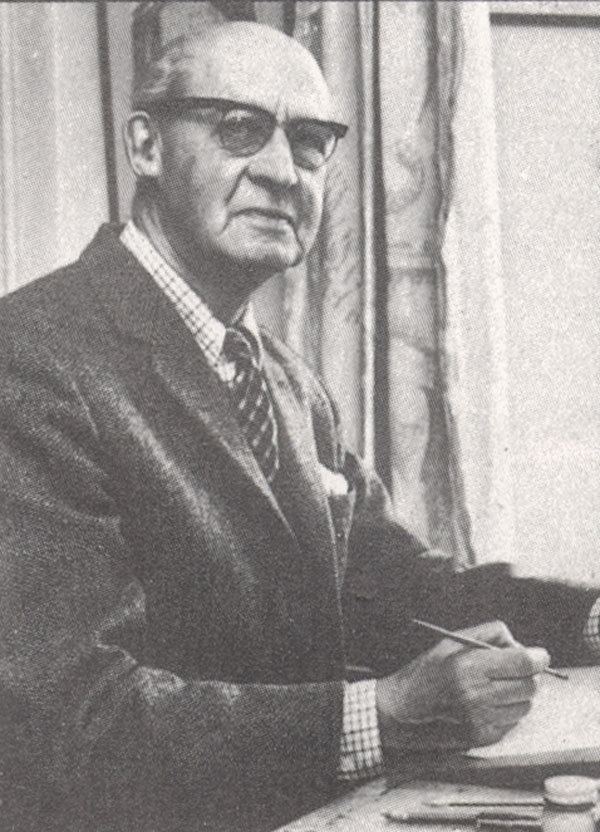 | ||
Other work Artist and book illustrator Died March 24, 1976, Midhurst, United Kingdom Spouse Florence Eleanor Chaplin (m. 1904) Books When We Were Very Young, Drawn from Life, Dream Days, Drawn from Memory, The World of Winnie‑the‑Pooh Similar People A A Milne, Kenneth Grahame, Mary Shepard, Christopher Robin Milne, Brian Sibley | ||
E H Shepard The artist and the man
The Art of Winnie-the-Pooh: How E. H. Shepard Illustrated an Icon
Ernest Howard Shepard (10 December 1879 – 24 March 1976) was an English artist and book illustrator. He is known especially for illustrations of the anthropomorphic soft toy and animal characters in The Wind in the Willows by Kenneth Grahame and Winnie-the-Pooh by A. A. Milne.
Contents
- E H Shepard The artist and the man
- The Art of Winnie the Pooh How E H Shepard Illustrated an Icon
- Career
- Personal life
- Works illustrated
- References
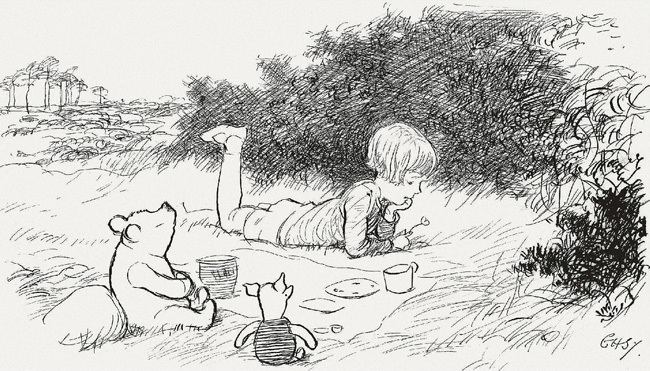
Career
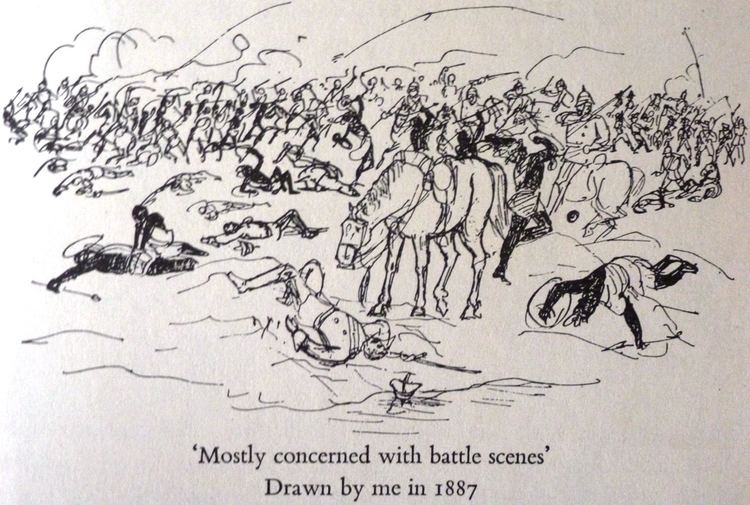
Shepard was born in St John's Wood, London. Having shown some promise in drawing at St Paul's School, in 1897 he enrolled in Heatherley's School of Fine Art in Chelsea. After a productive year there, he attended the Royal Academy Schools, winning a Landseer scholarship in 1899 and a British Institute prize in 1900. There he met Florence Eleanor Chaplin, who he married in 1904. By 1906 Shepard had become a successful illustrator, having produced work for illustrated editions of Aesop's Fables, David Copperfield, and Tom Brown's Schooldays, while at the same time working as an illustrator on the staff of Punch. The couple bought a house in London, but in 1905 moved to Shamley Green, near Guildford.
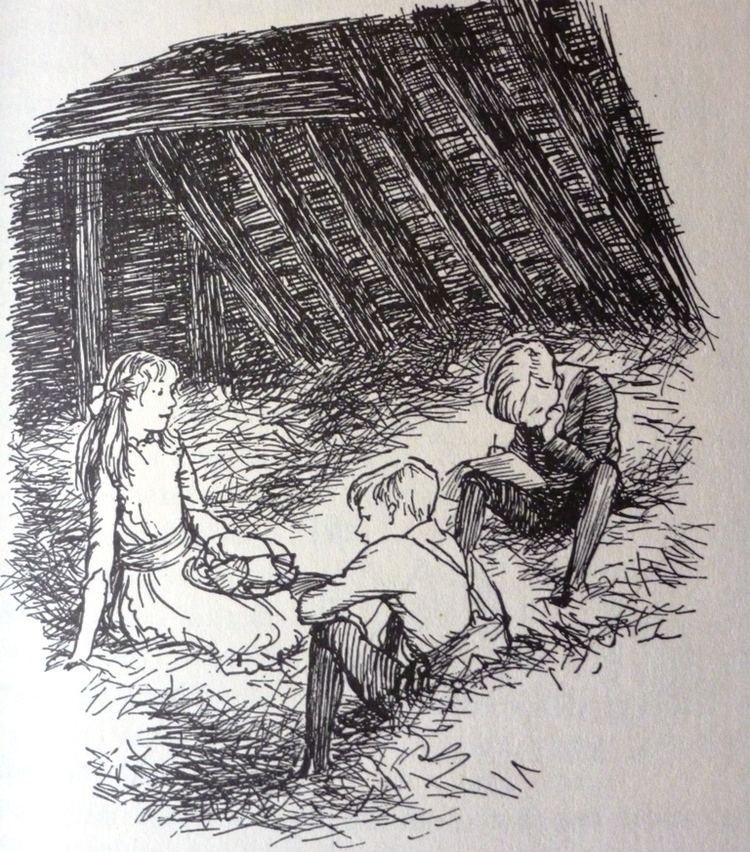
Shepard was a prolific painter, showing in a number of major exhibitions. He exhibited at the Royal Society of Artists, Birmingham—a traditional venue for generic painters—as well as in the more radical atmosphere of Glasgow's Institute of Fine Arts, where some of the most innovative artists were on show. He was twice an exhibitor at the prestigious Walker Art Gallery in Liverpool, one of the largest and most important provincial galleries in the country, and another at the Manchester Art Gallery, a Victorian institution now part of the public libraries. But at heart, Shepard was a Londoner, showing sixteen times at the Royal Academy on Piccadilly. His wife, who was also a painter, found a home in London's West End venue for her own modest output during a 25-year career.
![Image result for winnie the pooh [book]](https://alchetron.com/cdn/e-h-shepard-fd57da4e-5f3c-41fb-b020-74fdcbe16c7-resize-750.jpeg)
Although in his mid-thirties when World War I broke out in 1914, Shepard received a commission as a second lieutenant in the Royal Garrison Artillery, an arm of the Royal Artillery. By 1916, Shepard started working for the Intelligence Department sketching the combat area within the view of his battery position. On 16 February 1917, he was made an acting captain whilst second-in-command of a siege battery, and briefly served as an acting major in late April and early May of that year, when he reverted to the acting rank of captain. He was promoted to lieutenant on 1 July 1917. Whilst acting as Captain, he was awarded the Military Cross for his service at the Battle of Passchendaele. His citation read:
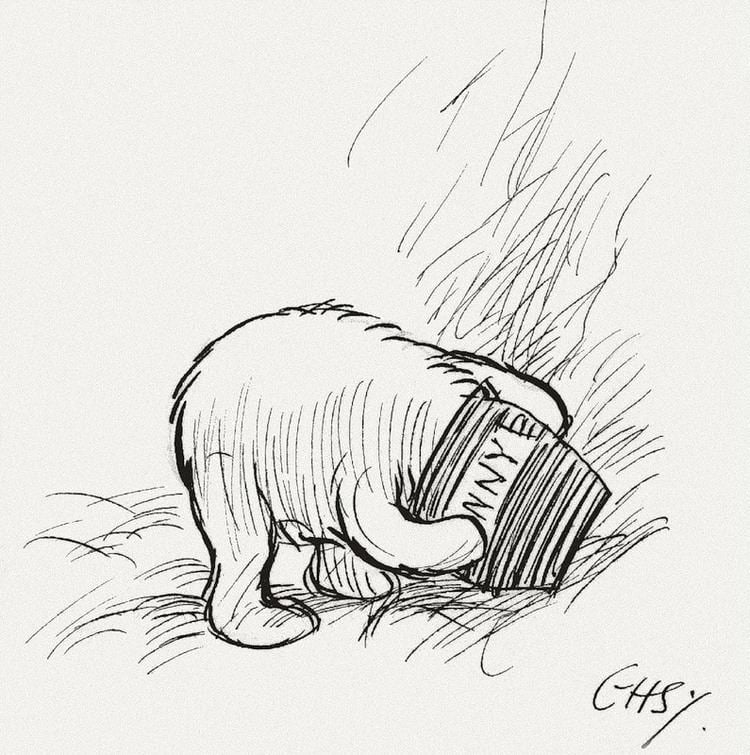
For conspicuous gallantry and devotion to duty. As forward Observation Officer he continued to observe and send back valuable information, in spite of heavy shell and machine gun fire. His courage and coolness were conspicuous.
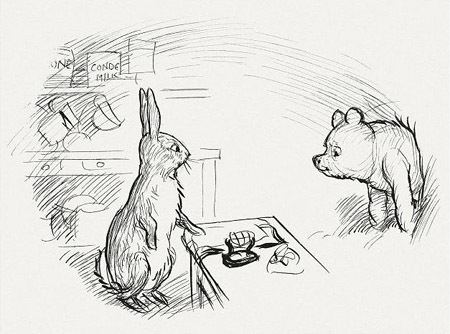
By war's end, he had achieved the rank of major.
Throughout the war he had been contributing to Punch. He was hired as a regular staff cartoonist in 1921 and became lead cartoonist in 1945. He was removed from this post in 1953 by Punch's new editor, Malcolm Muggeridge.
Shepard was recommended to A. A. Milne in 1923 by another Punch staffer, E. V. Lucas. Milne initially thought Shepard's style was not what he wanted, but used him to illustrate the book of poems When We Were Very Young. Happy with the results, Milne then insisted Shepard illustrate Winnie-the-Pooh. Realising his illustrator's contribution to the book's success, the writer arranged for Shepard to receive a share of his royalties. Milne also inscribed a copy of Winnie-the-Pooh with the following personal verse:
When I am gone,
Let Shepard decorate my tomb,
And put (if there is room)
Two pictures on the stone:
Piglet from page a hundred and eleven,
And Pooh and Piglet walking (157) ...
And Peter, thinking that they are my own,
Will welcome me to Heaven.
Eventually Shepard came to resent "that silly old bear" as he felt that the Pooh illustrations overshadowed his other work.
Shepard modelled Pooh not on the toy owned by Milne's son Christopher Robin but on "Growler", a stuffed bear owned by his own son. (Growler no longer exists, having been given to his granddaughter Minnie Hunt and subsequently destroyed by a neighbour's dog.) His Pooh work is so famous that 300 of his preliminary sketches were exhibited at the Victoria and Albert Museum in 1969, when he was 90 years old.
A Shepard painting of Winnie the Pooh, believed to have been painted in the 1930s for a Bristol teashop, is the only known oil painting of the famous teddy bear. It was purchased at an auction for $243,000 in London late in 2000. The painting is displayed in the Pavilion Gallery at Assiniboine Park in Winnipeg, Manitoba, Canada.
Shepard wrote two autobiographies: Drawn from Memory (1957) and Drawn From Life (1961).
In 1972, Shepard gave his personal collection of papers and illustrations to the University of Surrey. These now form the E.H. Shepard Archive.
Shepard was made an Officer of the Order of the British Empire in the 1972 Queen's Birthday Honours.
Personal life
Shepard lived at Melina Place in St John's Wood and from 1955 in Lodsworth, West Sussex. He had two children, Graham (born 1907) and Mary (born 1909), who both became illustrators.
